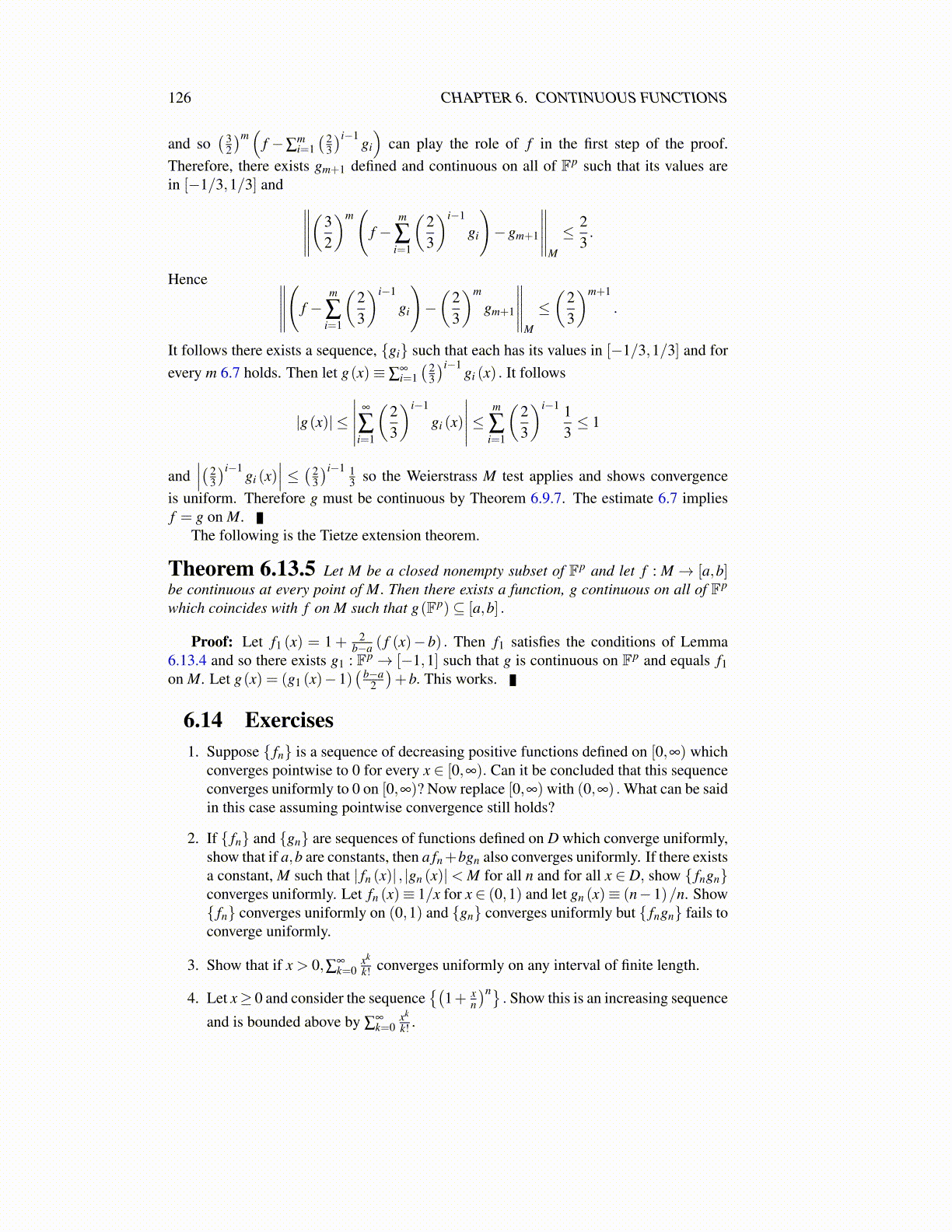
126 CHAPTER 6. CONTINUOUS FUNCTIONS
16. Suppose f ∈C ([a,b]) and∫ b
a f (x)xndx = 0 for every n≥ 0, such that n is an integer.Show that then f (x) = 0 for all x. I am assuming you know about the integral frombeginning calculus. This will be developed later in more generality. Hint: UseWeierstrass approximation theorem.
17. Suppose f :R→ R is continuous and T periodic. Thus f (x+ kT ) = f (x) for k ∈ Z.Show that there exists a sequence of polynomials {pn} converging uniformly to f on[−T/2,T/2] such that pn (T/2) = pn (−T/2). Hint: Say { p̂n} converges uniformlyto f on [−T/2,T/2]. Consider
pn (x)≡ f (T/2)+ p̂n (x)−[(
p̂n (T/2)− p̂n (−T/2)T
)(x+T/2)+ p̂n (−T/2)
]If p̃n denotes the T periodic extension of pn, explain why p̃n converges uniformly tof on R.
18. Is it possible to get a continuous onto function f : [0,1]→ P where P is the Cantorset?
19. Show there exists a continuous function θ : P→ [0,1] such that θ is onto where Pis the Cantor set. Show there exists a continuous function which maps the Cantorset onto [0,1]× [0,1]. You might recall that the Cantor set does not even contain anyintervals so this is very surprising.
20. For P the Cantor set, show there is a continuous, onto function f : P→ [0,1]× [0,1] .This may be a little easier than what is in the chapter. Can you extend f to all of[0,1] with f (x) ∈ [0,1]× [0,1]? Hint: You might use Tietze extension theorem onthe components of f .
21. Let K be a nonempty compact subset in Fp. For P the Cantor set, there is a continuousfunction f : P→ K which is onto. Try and show this. Will it be possible to extendf to all of [0,1] if K is not connected? Hint: Try and show that for every n, thereare finitely many closed balls having radius 1/n whose union contains K. Then forB one of these closed balls, you could consider K∩B as another compact set.
22. If f : K→Rq is continuous and one to one and K is compact, show that f−1 : f (K)→K must be continuous.